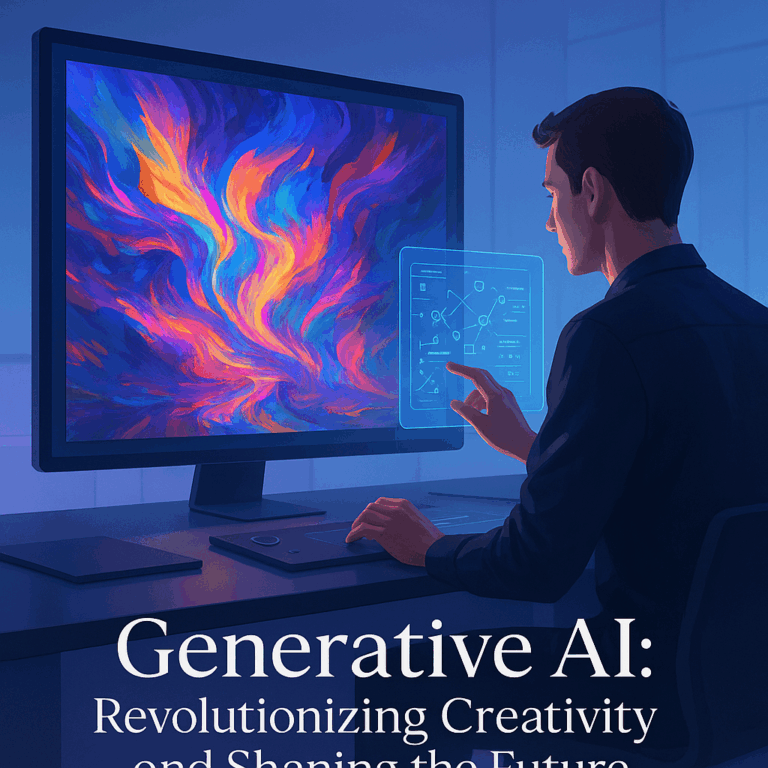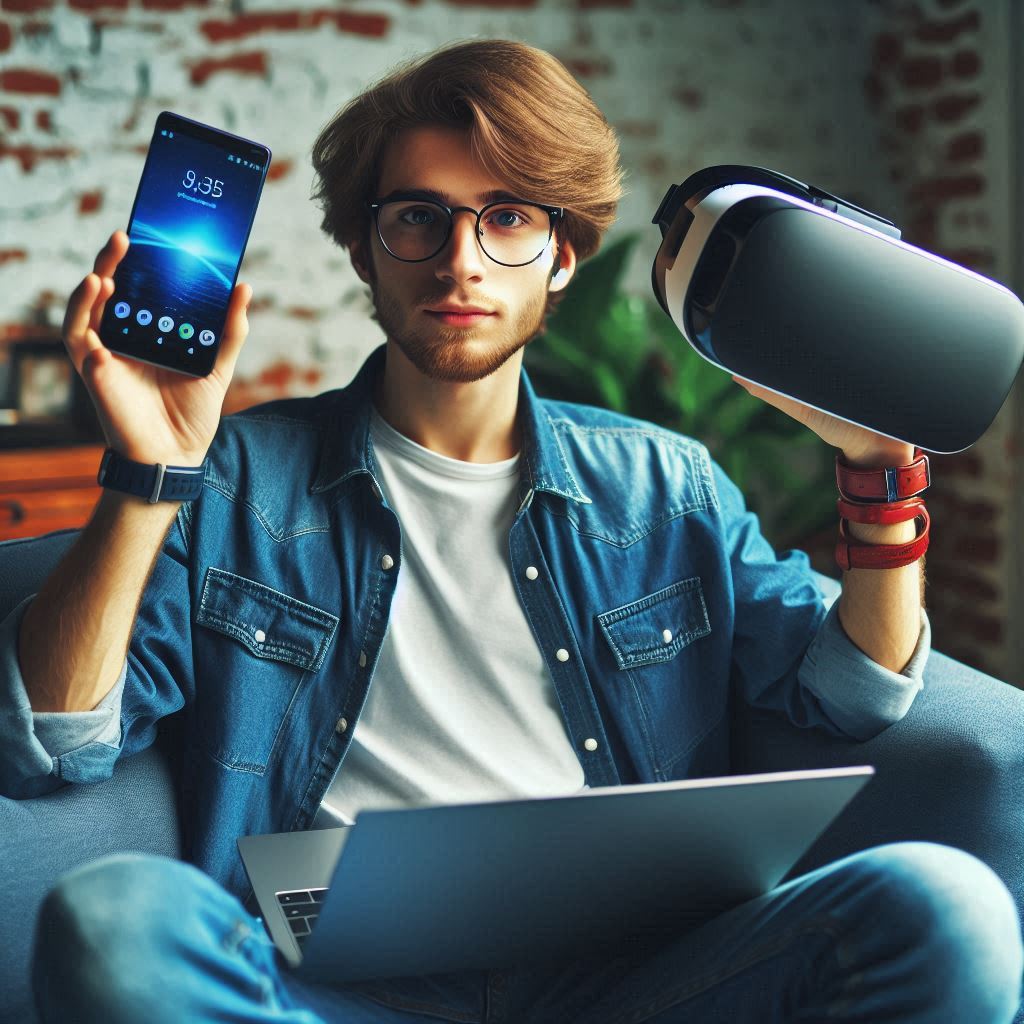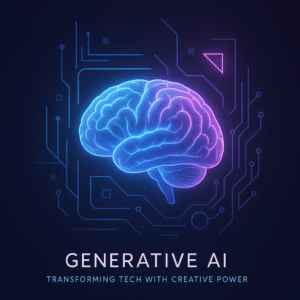The Dawn of Generative AI: Transforming Creativity and Industry
In the ever-accelerating realm of tech, few advancements have sparked as much fascination and debate as generative artificial intelligence. Unlike traditional AI systems designed for classification or prediction, generative AI models create novel content—ranging from text and images to music and synthetic data—ushering in a new era where machines do not simply assist human tasks but participate actively in creative processes.
This leap has been powered by transformative innovations in deep learning architectures, most notably the rise of large language models (LLMs) such as OpenAI’s GPT series, Google’s PaLM, and Meta’s LLaMA. These systems train on massive datasets, carefully learning statistical patterns and structures, enabling them to produce human-like prose, generate photorealistic images, or even design complex 3D models. The technology’s influence now stretches across diverse domains including media, design, software development, medicine, and beyond.
Real-World Applications Reshaping Industries
In content creation, generative AI is revolutionizing workflows by automating the production of articles, marketing copy, and multimedia assets. Journalists utilize LLMs to draft reports, freeing time for investigative tasks, while advertisers harness AI to tailor messaging with unprecedented scale and personalization. In the world of visual arts, tools like DALL·E and Stable Diffusion empower artists to manifest intricate concepts rapidly, breaking down traditional barriers between imagination and realization.

Beyond creative industries, generative AI also accelerates scientific research. Pharmaceutical companies use AI-generated molecular structures to expedite drug discovery, reducing years off traditional timelines. In engineering, generative design algorithms propose optimal structures that balance material usage, performance, and cost, enhancing sustainability.
Software development benefits as well. AI-powered code generation tools, such as GitHub Copilot, assist programmers by suggesting code snippets, catching errors, and even producing significant portions of code, streamlining complex projects and democratizing coding abilities among novices.
Societal and Ethical Dimensions
However, with power comes responsibility. Generative AI’s capacity to produce highly realistic content raises critical ethical questions. Deepfakes, AI-generated videos or images that convincingly mimic real people, have the potential to disrupt political discourse, compromise privacy, and propagate misinformation. The technology’s role in automating content creation also sparks concerns about job displacement, especially in journalism, creative arts, and customer service.
Furthermore, biases embedded in training data risk perpetuating harmful stereotypes or excluding minority perspectives. As MIT professor Timnit Gebru noted, “AI systems are only as good as the data they are trained on—and the data reflects the prejudices and inequalities of society.” This reinforces the necessity for transparency, fairness, and inclusivity in dataset curation and model design.
Privacy concerns intertwine with the technology’s data hunger, as giant models rely on scraping vast swaths of publicly available information, sometimes without explicit consent from original content creators. This raises debates about intellectual property and data ownership in the digital age.
Key Innovators Charting the Course
Leading the generative AI wave are companies and research institutions that balance innovation with ethical foresight. OpenAI stands at the forefront, not only with its GPT models but through initiatives aimed at ensuring AI benefits all humanity. Their charter emphasizes long-term safety and cooperation among AI developers globally.
Google DeepMind pushes boundaries with generative models that improve language understanding and protein folding predictions, advancing both tech and life sciences. Meanwhile, startups like Stability AI and Anthropic focus on creating open, responsible AI tools that prioritize user control and interpretability.
Academic labs worldwide continue to dissect the socio-technical complexities of generative AI, advocating for policy frameworks that regulate use without stifling innovation. Collaborative ecosystems between government, industry, and civil society are increasingly vital to address the multifaceted impacts of these technologies.
Future Trajectory: Merging Intelligence and Imagination
Looking ahead, the trajectory of generative AI is one of integration and augmentation. Models will grow more multimodal, seamlessly merging text, vision, audio, and even tactile inputs to create richer, more contextual outputs. Embedded in augmented reality (AR) and virtual reality (VR) environments, generative AI could enable dynamic, adaptive experiences that respond fluidly to human emotions and intentions.
Personalized AI assistants are envisioned to co-create with users, enhancing productivity and learning, while reducing cognitive load. In education, AI tutors could generate customized lesson plans and interactive simulations, tailored to individual needs and learning styles.
On the industrial front, generative AI integrated with robotic systems may design and fabricate components autonomously, shortening design-to-production cycles dramatically. Such convergence heralds a new epoch where creativity and automation coalesce, redefining the human-machine relationship.
Crucial to this future will be regulatory frameworks and ethical guidelines that safeguard human values, ensure equitable access, and promote transparency. Responsible innovation will necessitate public engagement and multidisciplinary collaboration to navigate the profound societal shifts induced by generative AI.
The advent of generative AI is not merely a technological milestone but a paradigm shift in how we conceive creativity, labor, and knowledge. As this powerful wave of tech innovation continues to unfold, it challenges us to rethink not only what machines can do but how we envision and cultivate the future of human ingenuity.

